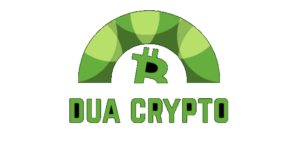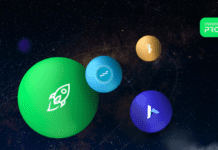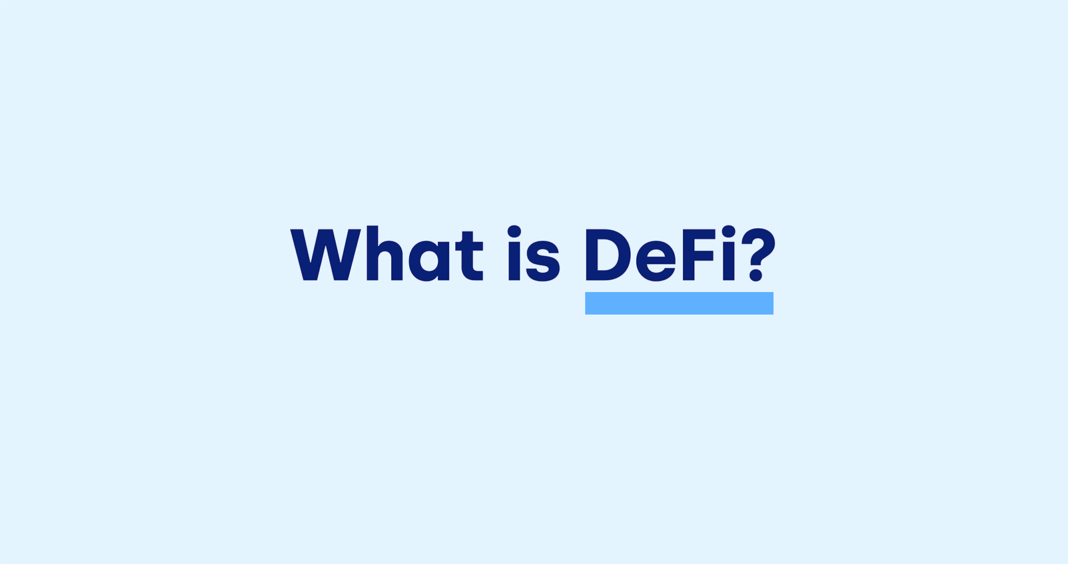DeFi’s Permissionless
The first wave of applications was focused on using the blockchain to create digital tokens and track their ownership. However, the newest wave of dApps has evolved beyond ownership to unique methods of management and transfer that resemble and expand upon current traditional financial products. Collectively known as Decentralized Finance (DeFi), this parallel financial system is worth over $3B and is made up of decentralized exchanges, collateralized loans, lending and borrowing platforms, leveraged trading, synthetic assets, prediction markets, privacy mixers, payment networks, and much more.
The Status Quo vs DeFi
The composability of financial applications is not a new concept. In fact, many of the popular user-facing applications used every day such as Uber, Lyft, and Airbnb are the result of financial composability. For example, Plaid and Stripe are financial services integrated throughout a multitude of web applications that provide native payment support to users. This greatly reduces their developer workload and speeds up the go-to-market strategy, since developers don’t have to build fiat payment infrastructure from scratch.
Permissioned Access
Traditional centralized financial services are inherently permission to build upon, requiring legally-binding financial contracts between the two parties. This raises the barrier to entry and makes it very difficult for developers to create fully automated or impartial financial applications because there is an ongoing possibility that access is revoked at any time. The central entity now has control over key parts of the application, putting into question the deterministic guarantees the third-party developer seeks to provide.
Reduced Transparency
Traditional financial services are typically opaque or subject to information asymmetry, where the public is provided much less insight into the backend infrastructure. This creates unknown levels of risk exposure and mitigates risk management to a small group of regulators. For example, financial composability enabled the creation of mortgage-backed securities by combining pre-existing consumer mortgages. Many deemed these financial products incredibly safe due to their diversification and AAA ratings given by Moody’s Investors Service, Standard & Poor’s, and Fitch Ratings. However, in 2008 it was revealed that many of these securities were backed by toxic subprime loans, triggering a global financial crisis. Had there been more transparency and visibility to a wider audience, such an implosion may have been prevented from occurring.
Regulatory and Legal Hurdles
If a traditional financial entity wants to offer its financial services or products to citizens within a certain country, by default they will often be required to meet the compliance and regulation standards of that nation. These rules include Know Your Customer (KYC) and Anti-Money Laundering (AML) laws and regulations, among others. While regulatory standards may improve markets in certain instances, meeting standards can lead to high compliance costs (e.g. expensive legal consultation) and raise the barrier to entry to a point where only a select few well-connected and well-capitalized firms are able to compete, especially when operating across numerous different jurisdictions. Additionally, compliance tends to involve more manual processes that hinder multi-party process automation
DeFi Composability
The modular composability of the DeFi ecosystem enables developers to focus on their core business logic, knowing they can always access key infrastructure without any permission required. With DeFi, when a developer creates a new token, they do not have to build their own exchange or pay to get it listed on some proprietary platform in order to support trading and the creation of liquidity. Instead, they can list their token on a pre-existing decentralized exchange (DEX) that has been thoroughly audited and contains an existing user base. This grants token holders immediate access to liquidity and different financial use cases with it, greatly expanding the utility of their token.
Some of the decentralized infrastructure in the background making DeFi applications possible include:
- Smart contract enabled blockchains (Ethereum)
- Tamper-resistant oracle networks (Chainlink)
- Persistent data storage/web hosting (IPFS)
- Censorship-resistant domain names (ENS)
- Reliable data queries and indexing (The Graph)
Listing a token on a DEX
Some different money LEGOs in DeFi include:
- Decentralized Exchanges (Kyber Network, Loopring)
- Automated Market Makers (Bancor, Uniswap)
- DeFi Aggregators (1inch, Yearn)
- Stablecoins (Maker, Kava)
- Money Markets (Aave, DMM)
- Synthetic Assets (Synthetix, UMA)
- Cross-chain Assets (Ren, Keep)
“One of the biggest value propositions of DeFi is the interoperability by default. We have a financial system, which is accessible to the wider ecosystem. This means that anyone can build a product by combining two protocols, such as Aave and Synthetix, and provide a new user experience. If that product is good, it will get network effects quickly since liquidity moves in an interoperable fashion as well. That’s something that is far more powerful than we have in current financial systems.”
Stani Kulechov, Founder and CEO of Aave
Composability Squared
A key property of DeFi composability is that it enables a chain of decentralized applications to be connected together in tandem. This increases capital efficiency as assets can be used within multiple applications at a time, with near-zero friction costs and no permission required. It also fosters a growing network effect where every new DeFi application makes every other pre-existing DeFi application even more powerful and useful.
For example, while a user can gain working capital by minting decentralized stablecoins via opening an overcollateralized loan, these stable coins become even more useful when deposited into a decentralized money market and tokenized to become non-custodial interest-bearing stable coins. This means while the underlying stablecoins in the money market are being lent out to borrowers and actively earning interest, the newly created interest-bearing tokens, which represent ownership of the stable coin deposit, can be used within other DeFi applications or even used to pay for goods and services.
DEX Aggregation
A DeFi application that also makes heavy use of composability is 1inch.exchange. This is a decentralized exchange (DEX) aggregator that fetches liquidity from across all DEXs on Ethereum, allowing users to swap tokens on-chain at the lowest slippage possible. 1inch splits large trades into multiple orders that can then be settled across multiple DEXs within a single transaction to achieve the most optimal exchange rate.
1inch creates a superior experience for users; instead of needing to check and compare many different DEXs for their current exchange rates, users can only have to navigate to a single application and immediately get access to all the liquidity residing on Ethereum.
Flash Loans
Another application harnessing composability is the decentralized money market Aave, which increases the capital efficiency and yield of deposits by enabling superfluidity of assets through flash loans. These are temporary uncollateralized loans that must be paid back (plus a small fee) within the same transaction. If a flash loan borrower is unable or does not pay back their loan immediately, then the transaction as a whole reverts, protecting the protocol and its lenders from any defaults.
Flash loans are a powerful concept; not only are they atomic (either succeeds or reverts, no in-between), but they allow anyone to temporarily access a large amount of capital to take advantage of inefficiency or leverage up an opportunity, ultimately leveling out the playing field for DeFi. Flash loans can be used to perform profitable arbitrage between DEXs, seamlessly leverage up a loan, switch out the collateral and/or debt in a loan, and numerous other use cases all within a single transaction.
Money LEGOs as Collateral
In addition to the above, Aave has also rolled out support for unique collateral types that take advantage of tokens generated from other DeFi applications. For example, the first new unique collateral type is liquidity pool shares from Uniswap, an Automated Market Maker (AMM) DEX. Aave was able to roll this feature out in a manner of only a few weeks, due to the fact they utilized Chainlink oracles which already supported the price feeds required. By connecting to Chainlink’s price reference feeds, Aave was able to seamlessly implement advanced forms of composability in a secure manner.
Risks of Composability
Every application is based on its own design trade-offs in order to meet specific needs for each desired use case. This can involve the usage of an admin key for upgradability, an oracle mechanism used for pricing data, a distributed token governance system, or other key attributes of a contract modification. Additionally, there is potential for software bugs in the source code of the smart contract itself that could cause a decentralized application to behave in an unexpected manner. To mitigate these vulnerabilities, the Chainlink protocol has undergone multiple smart contracts security audits, including audits on each new product feature, as well as offering generous bug bounties and having fully open-source code. This ensures users have full confidence before they even begin to integrate oracles into their applications..
Conclusion
The open-source, permissionless nature of DeFi facilitates a level playing field, which fosters an environment that requires constant innovation to retain market share. The DeFi applications that make use of composability today are setting the foundation for the next generation of dApps that will utilize even more advanced forms of composability. There are limitless use cases to discover and applications to be built. The future of a permissionless modular financial future looks bright indeed.
































